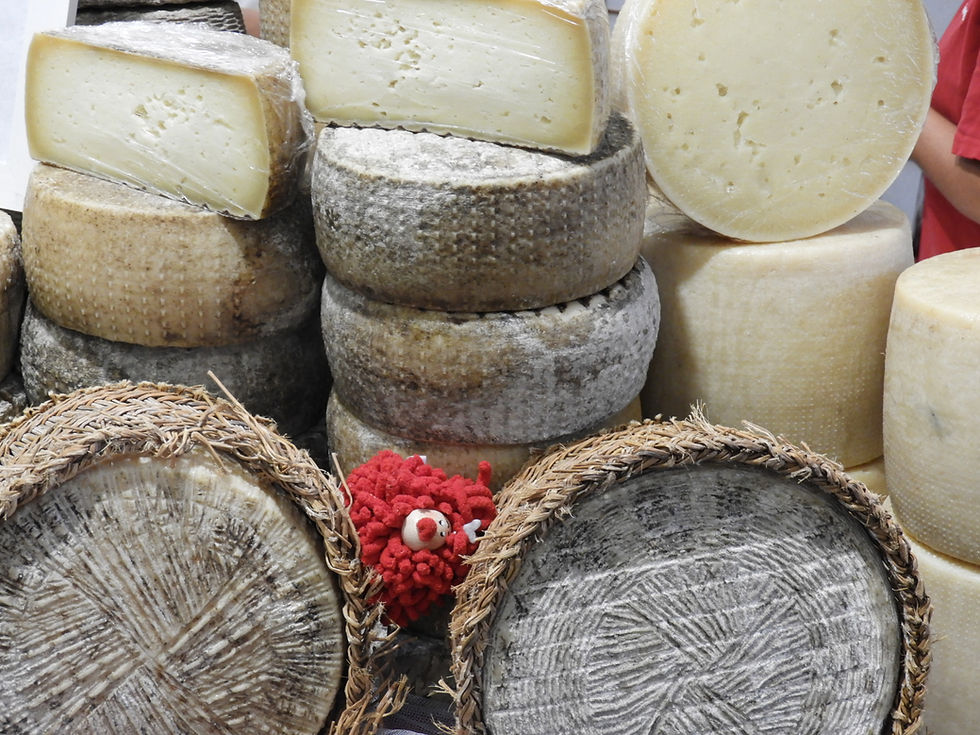Veneto
- Aug 26
- 3 min read
Updated: Sep 23
The Veneto Region
Veneto is often associated with Venice, its most famous city, but the region offers much more for travellers. Alongside Venice, cities such as Padova, Treviso, Verona, and Vicenza each contribute their own unique character to the area.

Geography and Borders
Covering 18,391 square kilometres, Veneto is the eighth largest region in Italy. It is located in the north-eastern part of the country, bordered by Friuli-Venezia Giulia to the east, Emilia-Romagna to the south, Lombardy to the west, and Trentino-Alto Adige to the north. At its northernmost corner, the region also shares a border with Austria. The provinces within Veneto are Belluno, Padova, Rovigo, Treviso, Venezia, Verona, and Vicenza.

Historical Background
Before the unification of Italy, Veneto was an independent state for over a thousand years, known as the Venetian Republic. Venice served as its capital, presiding over one of the world’s largest and richest maritime republics and trade empires. The region was annexed to Italy in 1866, following brief periods of Austrian and French rule. This relatively recent incorporation means many Venetians still strongly identify with their unique heritage. Veneto is one of only two Italian regions, alongside Sardinia, whose inhabitants are officially recognised as 'A People'.
Modern Veneto
Having once been the heartland of the Venetian Republic, Veneto is now among the wealthiest, most developed and industrialised regions in Italy. It boasts one of the country’s richest collections of historical, natural, artistic, cultural, musical, and culinary treasures. Veneto is also the most visited region in Italy, attracting around 60 million tourists every year. In addition to Italian, many locals speak Venetian.
Venice: The Iconic Capital
Venice, the capital of Veneto, is world-renowned for its network of canals. The city is built on an archipelago of 117 islands, connected by 455 bridges and traversed by 177 canals within a shallow lagoon. In the historic centre, canals take the place of roads, and nearly all transportation is either via water or on foot.
Venice is considered one of the world’s most important tourist destinations, celebrated for its extraordinary art and architecture. The city receives around 70,000 visitors each day. Tourism has been a significant part of Venice’s economy since the 18th century, when it became a key stop on the grand tour because of its distinctive cityscape and rich artistic and musical culture. To manage the immense influx, a levy is now charged for each tourist, and restrictions are in place on visitor numbers and on cruise ships entering the city from Adriatic cruises. Travellers should be prepared for crowds, or plan their visit outside peak times for a quieter experience.
Venice’s most notable attractions include St Mark’s Basilica, the Grand Canal, and Piazza San Marco. The Lido di Venezia is a well-known luxury destination, drawing thousands of actors, critics, and celebrities each year during the Venice Film Festival.

Culinary Culture: Locavore of the Veneto
Veneto is renowned for its diverse cuisine, offering a broader range of foods than most other Italian regions. The vibrant market in Padova is an ideal place to experience the variety and quality of local produce. In areas near the Adriatic, as well as along rivers and the shores of Lake Garda, fish and seafood are frequently featured as antipasti, with pasta as a main course. The region’s residents enjoy a variety of meats, including beef, horse, pork, calves’ liver, poultry, and numerous types of game birds. Risotto and rice dishes are also popular, and many notable pasta recipes involve seafood sauces.
The countryside produces a remarkable array of high-quality fruits and vegetables, such as radicchio from Treviso and asparagus from Bassano. Near Verona, orchards yield apples, pears, cherries, and peaches, creating a colourful landscape to the west of Venice. North of Lake Garda, olives are cultivated, producing some of the world’s finest olive oil. Veneto is also known for its cheeses, including Asiago, Casatella Trevigiana, Monte Veronese, Morlacco del Grappa di Malga, Piave, Provolone Valpadano, and Ripasso.

Wine and Produce
Veneto features 17 DOC wine zones with many subcategories. Among the most famous are Bardolino, Soave, and Valpolicella. Prosecco, especially from the province of Treviso, is highly regarded. Amarone, a rich red wine from Verona, is also notable. Other varietals produced in the region include Bianca di Custoza, Ubriaco, Gambellara, Lugana, Montello Rosso, Raboso, and Recioto di Soave, which are made from Garganega and Trebbiano grapes.




Comments